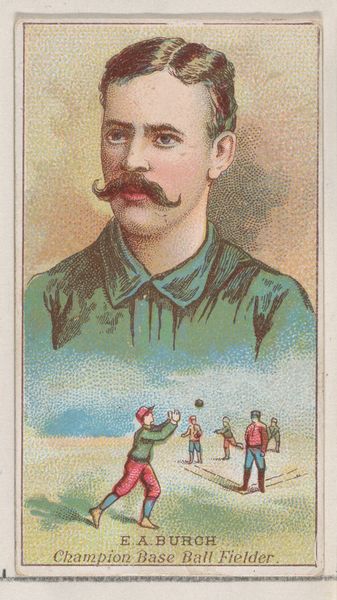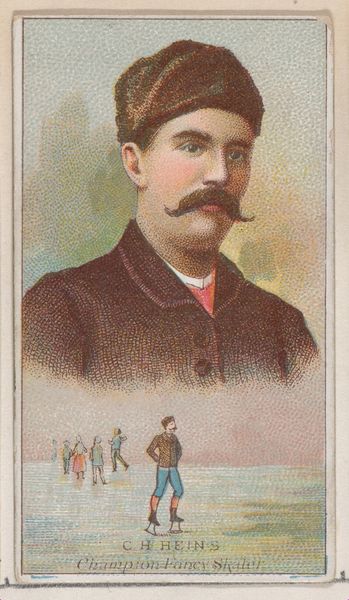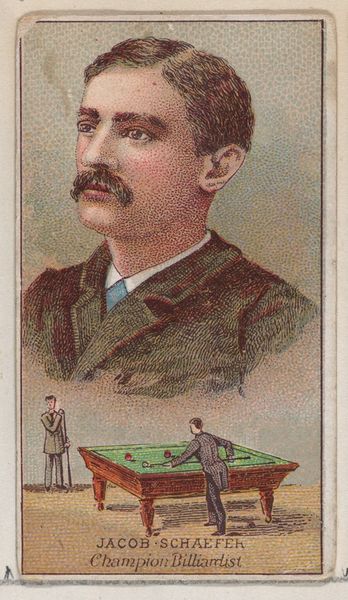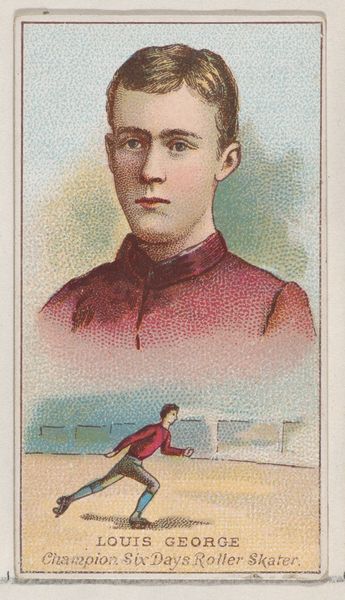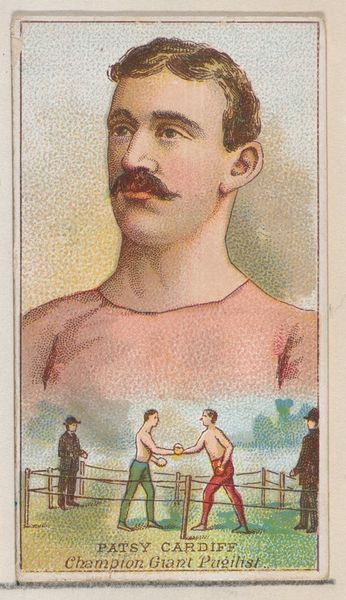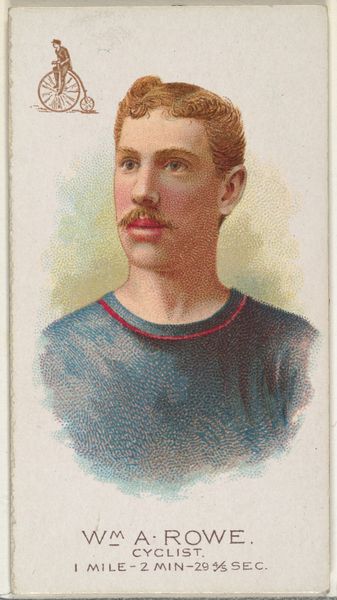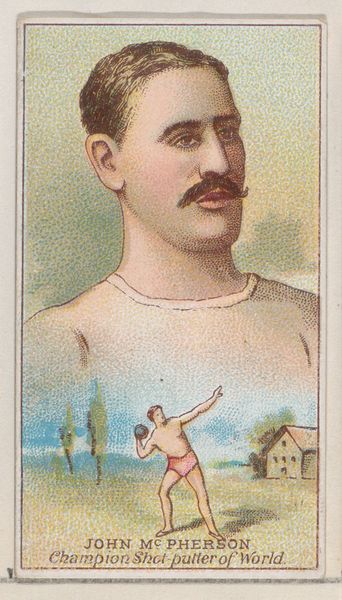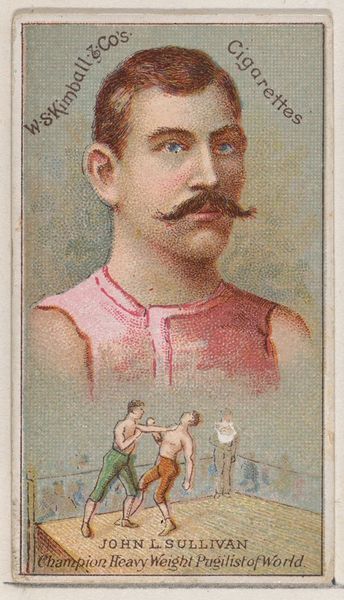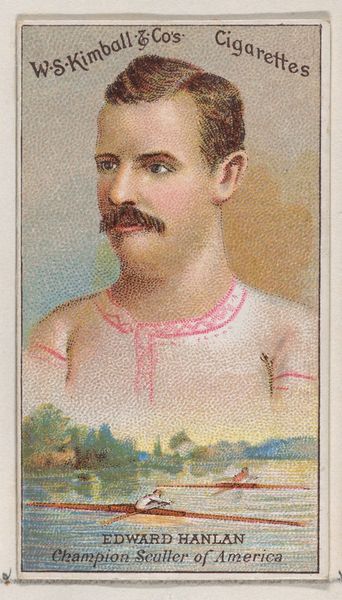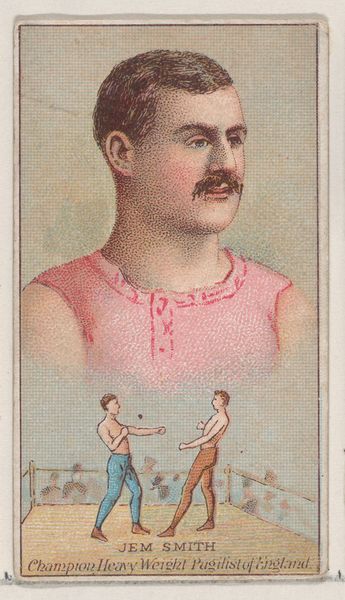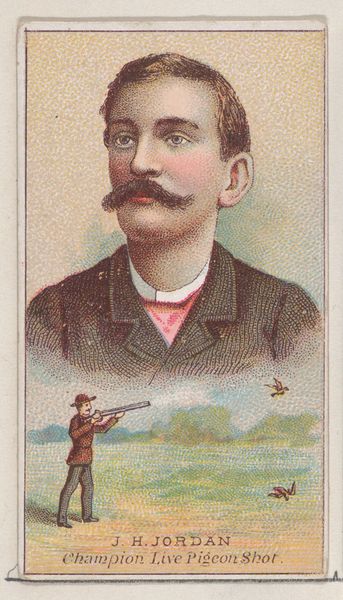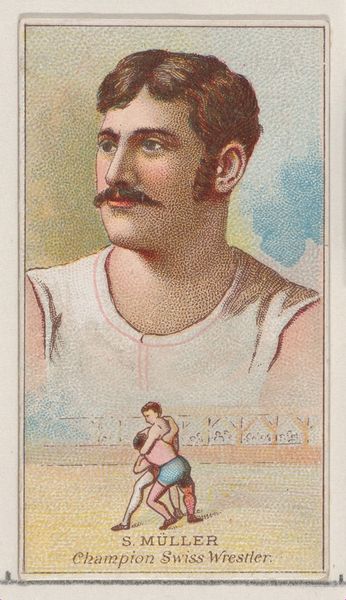
Phillip Casey, Champion Handball Player, from the Champions of Games and Sports series (N184, Type 2) issued by W.S. Kimball & Co. 1887
0:00
0:00
drawing, coloured-pencil, print
#
portrait
#
drawing
#
coloured-pencil
#
pictorialism
# print
#
caricature
#
coloured pencil
#
genre-painting
Dimensions: Sheet: 2 11/16 × 1 1/2 in. (6.8 × 3.8 cm)
Copyright: Public Domain
Curator: This is an 1887 print produced by W.S. Kimball & Co. as part of their Champions of Games and Sports series. It depicts Phillip Casey, a champion handball player. The medium appears to be colored pencil over a printed base. Editor: My initial impression is how stylized and idealized it is. The coloration and composition feels almost theatrical, in a very nostalgic way. There’s a certain artificiality, even naiveté, that’s charming. Curator: It's fascinating how the manufacturers utilized mass-produced images of athletes in what were, essentially, cigarette cards. It was a promotional tactic. Consider the working-class consumption habits and how this imagery seeped into their daily lives, normalizing specific ideals of masculinity and athletic prowess. The baseball card market definitely owes something to the industrial production that these companies spearheaded. Editor: Right, the material aspect of it is really crucial; a humble paper product printed on a massive scale distributed with something as commonplace as tobacco, giving value to its subject. A working class hero promoted by big business. It’s a peculiar democratization of fame, almost. Curator: The printing process itself is of interest. It is clearly a form of low relief and one would have to analyse examples of how consistent the color range is over the mass produced series of cards to really grasp their production process, and ultimately where its success lies, both from a marketing and historical standpoint. What makes someone collect this? Why Phillip Casey, a now, more or less, obscure sports figure? Editor: The appeal lies, in part, in its collectible nature, and that, as you mentioned, speaks to a larger cultural trend regarding the celebration of sporting figures. The imagery here served as a form of early advertising, building and promoting not only the athletes themselves but the very notion of athletic stardom. It mirrors our modern relationship with sport and celebrity culture. Curator: Yes, tracing the material history and understanding how those forces came together at that historical moment provides insights not just into the sport, but into American commercial culture itself. Editor: Exactly. Thinking about these prints today allows a look at the beginnings of an athletic idol complex that's still prevalent now. They truly are an evocative look at their era.
Comments
No comments
Be the first to comment and join the conversation on the ultimate creative platform.

